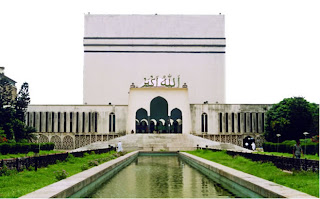Accommodation is more expansive in Dhaka than elsewhere in Bangladesh, but it’s still cheap by international standards. Almost all midrange and top-end hostel offer large, year round discount rates (up to 50% off) and most of the time this will be volunteered before you’ve had a chance to ask. However if you’re booking online or by phone, you’re less likely to be offered a discount. Fortunately, it’s rare that Dhaka hotels are full, so you can safely just turn up and find something to suit. The highest concentration of budget and midrange hotels in the area extending from Inner Circular Rd down to Old Dhaka. There aren’t any top-end hostel in Old Dhaka.
Old Dhaka
BUDGET
There are numerous hotel on Nawabpur Rd costing no more than a handful of Taka, but they almost universally refuse to accept foreign tourists.
Hotel sugandha: (phone-955 6720, 243-4 Nawabpur Rd s/d Tk 250/450) it’s cheap and it’s one of the very few that will let you stay, but hygiene isn’t a strong point, and female guests aren’t welcome. The double rooms are quite large and have balconies overlooking a grey wall.
MIDRANGE
Hotel Ramna: (phone-956 2279, 45 Bangabandhu Ave, s/d from Tk-500-800) don’t get too excited by the glass-fronted recepation area, the rooms are much more down-to-earth. However , they are kept clean and what you get for the price is excellent. It can be a little difficult to find in the maze of tailor shops.
Hotel Grand palace International: (PHONE-956 1623, 11-12 North south Rd, with/without air-con Tk-800/1250) the small and tidy rooms would be a bet for the bedlam of noise echoing up from the road below, which is certain to make sleep an impossible dream.
Old Dhaka
BUDGET
There are numerous hotel on Nawabpur Rd costing no more than a handful of Taka, but they almost universally refuse to accept foreign tourists.
Hotel sugandha: (phone-955 6720, 243-4 Nawabpur Rd s/d Tk 250/450) it’s cheap and it’s one of the very few that will let you stay, but hygiene isn’t a strong point, and female guests aren’t welcome. The double rooms are quite large and have balconies overlooking a grey wall.
MIDRANGE
Hotel Ramna: (phone-956 2279, 45 Bangabandhu Ave, s/d from Tk-500-800) don’t get too excited by the glass-fronted recepation area, the rooms are much more down-to-earth. However , they are kept clean and what you get for the price is excellent. It can be a little difficult to find in the maze of tailor shops.
Hotel Grand palace International: (PHONE-956 1623, 11-12 North south Rd, with/without air-con Tk-800/1250) the small and tidy rooms would be a bet for the bedlam of noise echoing up from the road below, which is certain to make sleep an impossible dream.








































































